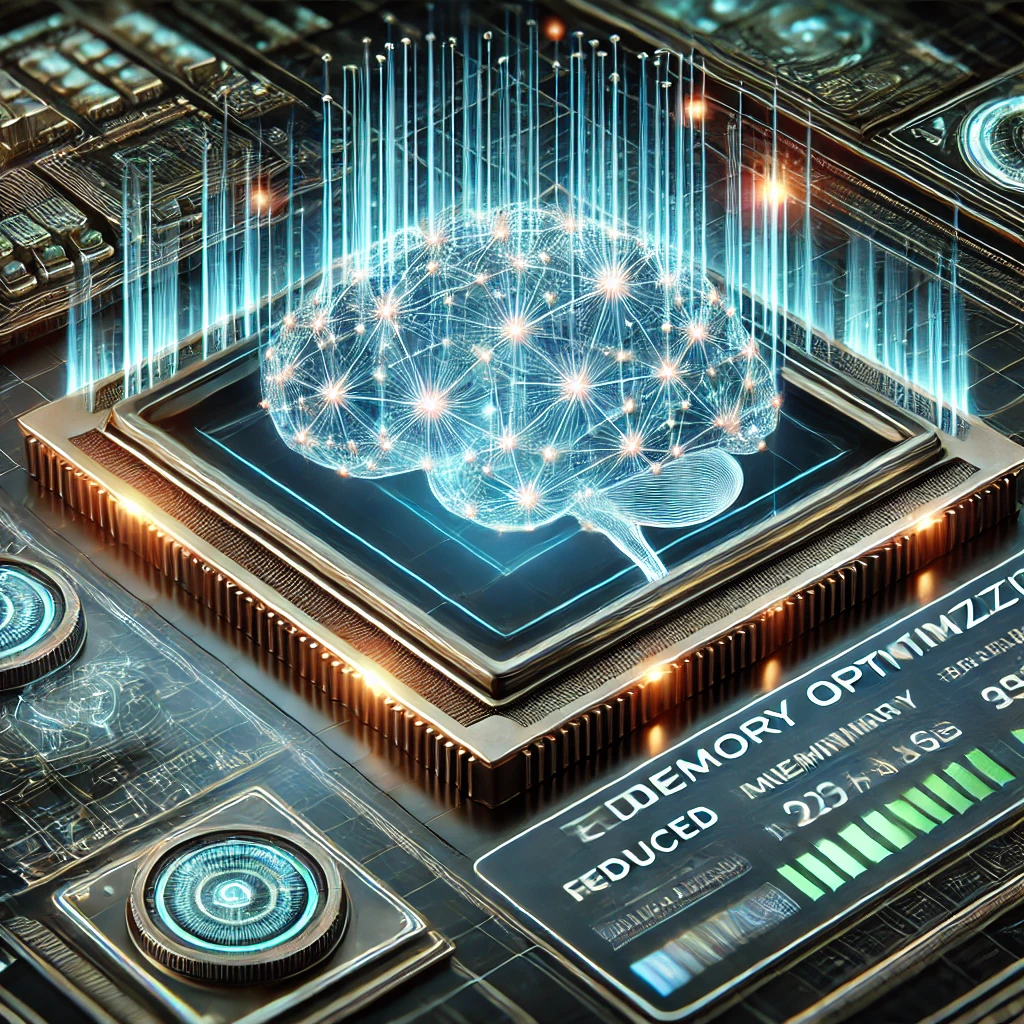Technology
Neural Attention Memory Models (NAMMs) & LLM Memory Optimization by Sakana AI

In the rapidly evolving field of artificial intelligence, optimizing memory usage in large language models (LLMs) is crucial for enhancing performance and reducing computational costs. Sakana AI, a Tokyo-based startup, has introduced an innovative solution to this challenge with their Neural Attention Memory Models (NAMMs). This technology dynamically manages the Key-Value (KV) cache in transformer models, significantly improving efficiency without compromising performance.
The Challenge of Memory Management in Transformers
Transformer models, the backbone of many AI applications, rely on self-attention mechanisms to process input sequences. As these models handle longer contexts, the KV cache—which stores representations of previous tokens—grows substantially, leading to increased memory consumption and computational demands. Traditional methods to mitigate this involve heuristic-based token pruning, which often results in performance degradation due to the indiscriminate removal of potentially important information.
Introducing Neural Attention Memory Models (NAMMs)
NAMMs address these challenges by learning to discern and retain essential tokens while discarding redundant ones. This is achieved through a model-agnostic feature extraction framework that utilizes the Short-Time Fourier Transform (STFT) with a Hann window. This approach compresses token information into spectrograms, capturing the evolution of token importance across the attention span. A lightweight neural network then evaluates these compressed features, assigning selection scores to tokens to determine their retention in the KV cache.
A key innovation in NAMMs is the backward attention memory (BAM) model, which employs counter-causal masking to differentiate between older and newer tokens. This mechanism prioritizes relevant information, ensuring that the model focuses on critical data while efficiently managing memory resources.
Evolutionary Training Approach
Unlike traditional backpropagation methods, NAMMs are trained using Covariance Matrix Adaptation Evolution Strategy (CMA-ES), an evolutionary algorithm. This approach allows NAMMs to optimize memory management strategies without the need for gradient-based training, facilitating efficient zero-shot transfer across various models and applications. The evolutionary training enables NAMMs to adapt to different tasks and architectures, enhancing their versatility and effectiveness.
Empirical Performance and Efficiency
Extensive evaluations have demonstrated NAMMs’ superiority over existing memory management techniques. In benchmarks such as LongBench and Infinite Bench, NAMMs not only reduced the KV cache size by up to 75% but also achieved performance gains of 11% and 15%, respectively, compared to baseline models. This indicates that NAMMs can effectively manage long-context tasks, maintaining or even enhancing accuracy while significantly reducing memory requirements.
Furthermore, NAMMs have shown remarkable adaptability across different domains. For instance, in reinforcement learning scenarios, NAMMs improved decision-making by discarding context that could propagate errors, leading to enhanced performance across various tasks. This adaptability underscores NAMMs’ potential as a universal solution for memory optimization in transformer models.
F.A.Q
1. What is LLM memory optimization?
LLM memory optimization refers to techniques used to manage and reduce the memory usage of large language models (LLMs) without compromising performance. It is crucial for improving efficiency, reducing computational costs, and enabling long-context processing.
2. What are Neural Attention Memory Models (NAMMs)?
NAMMs are a novel memory management approach developed by Sakana AI. They optimize how LLMs store and retain token representations in the KV cache, reducing memory usage while maintaining or improving model performance.
3. How do NAMMs differ from traditional memory management techniques?
Unlike heuristic-based token pruning, which removes tokens indiscriminately, NAMMs use a learned selection mechanism to retain only the most relevant tokens. They employ a model-agnostic feature extraction framework and a neural network to determine token importance dynamically.
4. How do NAMMs optimize memory in LLMs?
NAMMs use the Short-Time Fourier Transform (STFT) to compress token information into spectrograms, capturing token importance trends. A lightweight neural network then assigns selection scores to determine which tokens should be retained in the KV cache.
5. What is the KV cache in transformers, and why is it important?
The KV cache (Key-Value cache) stores previous token representations in transformer-based models. It allows the model to reference past tokens efficiently, improving inference speed. However, as context length increases, the KV cache grows, leading to excessive memory usage. NAMMs help manage this growth efficiently.
6. What role does the Backward Attention Memory (BAM) model play in NAMMs?
The BAM model introduces counter-causal masking, which helps the LLM differentiate between older and newer tokens. This mechanism ensures that only the most relevant past information is retained, further improving memory efficiency.
7. How are NAMMs trained?
NAMMs are trained using the Covariance Matrix Adaptation Evolution Strategy (CMA-ES), an evolutionary algorithm. This eliminates the need for gradient-based backpropagation and allows NAMMs to adapt across different models and tasks efficiently.
8. What performance improvements do NAMMs offer?
Benchmarks such as LongBench and InfiniteBench have shown that NAMMs can reduce KV cache size by up to 75% while improving model accuracy by 11% to 15%, making them highly effective for long-context tasks.
9. Can NAMMs be integrated into existing LLM architectures?
Yes, NAMMs are model-agnostic and can be integrated into various transformer-based architectures without requiring modifications to the underlying model.
10. How do NAMMs impact computational efficiency?
By reducing memory usage, NAMMs lower the computational cost associated with processing long contexts, enabling faster inference times and making AI deployment more resource-efficient.
11. What industries or applications can benefit from NAMMs?
NAMMs can enhance AI applications across various industries, including:
- Chatbots & Virtual Assistants – Efficiently handle long conversations.
- Legal & Medical AI – Process lengthy documents with lower memory overhead.
- Gaming & AI Agents – Improve real-time decision-making in complex environments.
- Scientific Computing – Optimize large-scale data processing tasks.
12. Are NAMMs open-source or commercially available?
As of now, Sakana AI has not publicly released NAMMs as open-source. Companies interested in integrating this technology may need to collaborate with Sakana AI directly.
13. What are the next steps for NAMM technology?
Future developments may include further improvements in adaptive token selection, real-time learning, and expansion to multimodal AI models that process text, images, and audio simultaneously.













